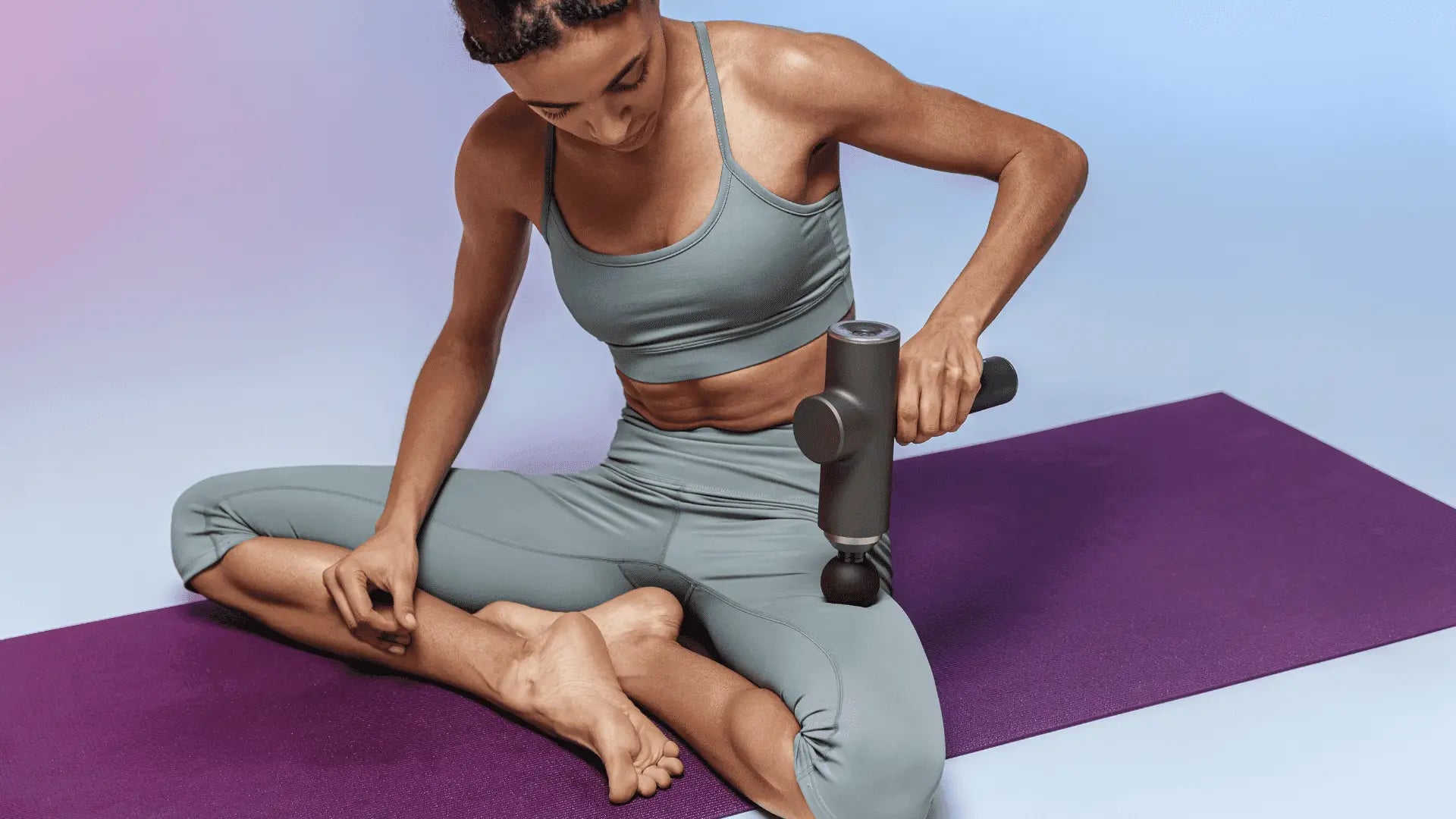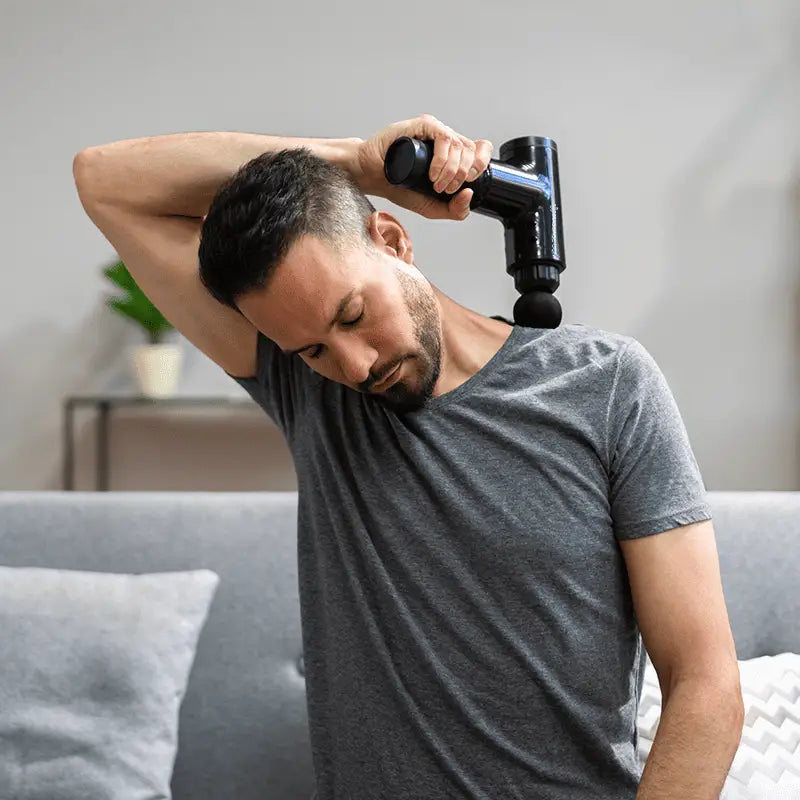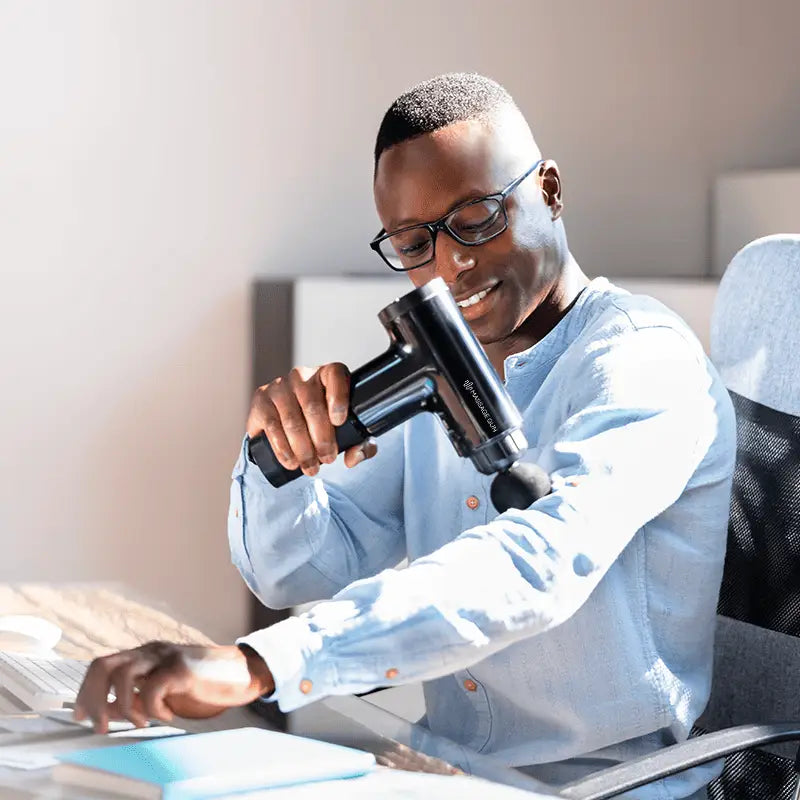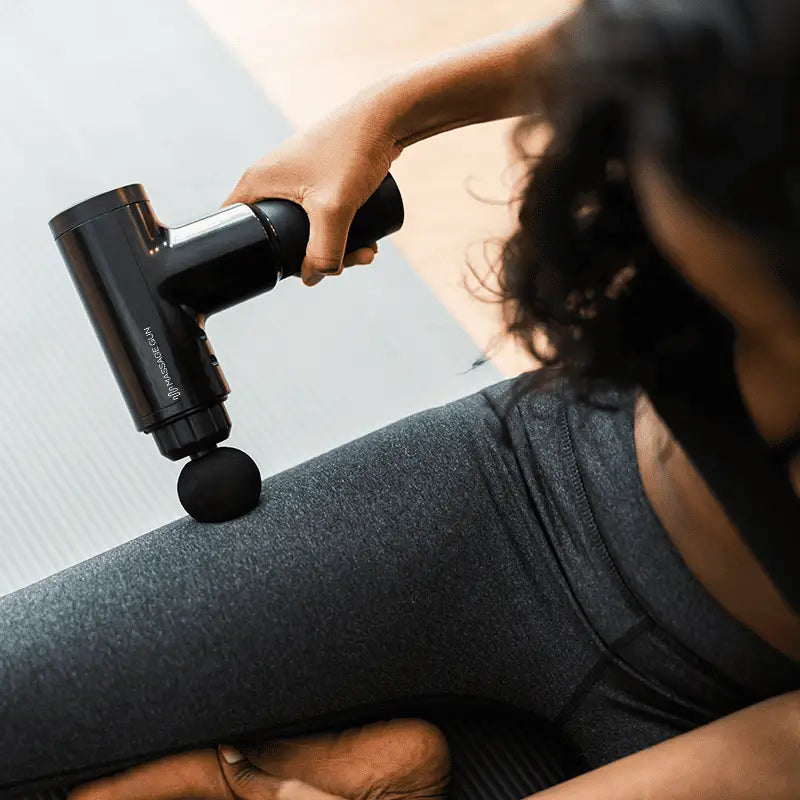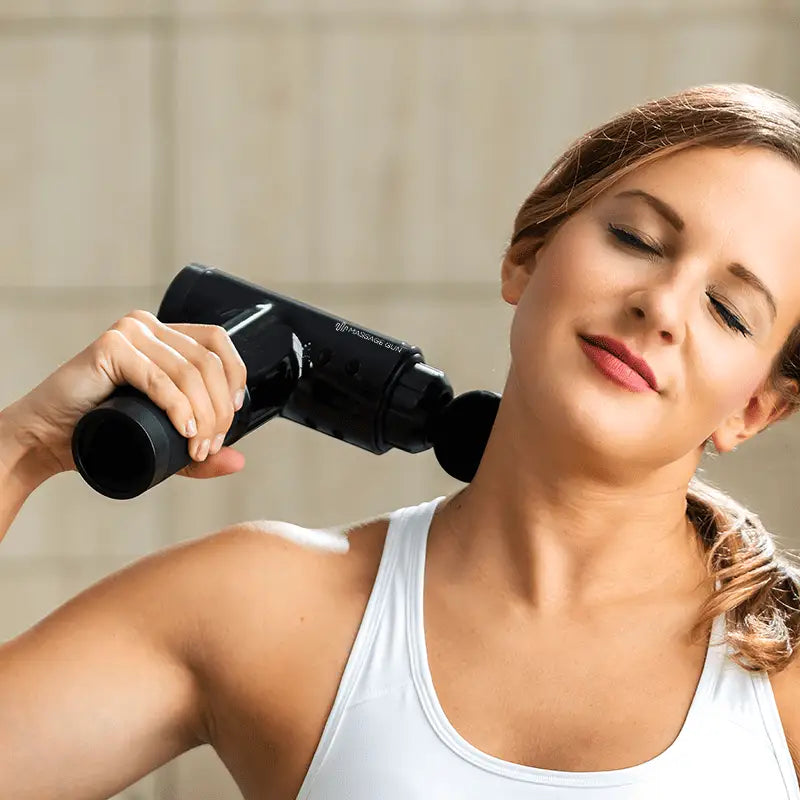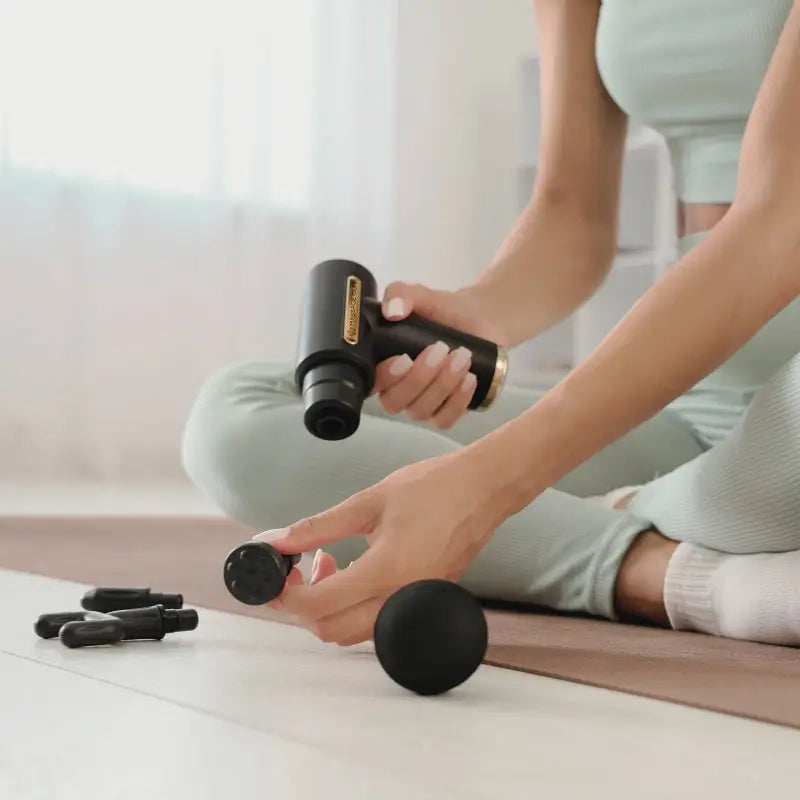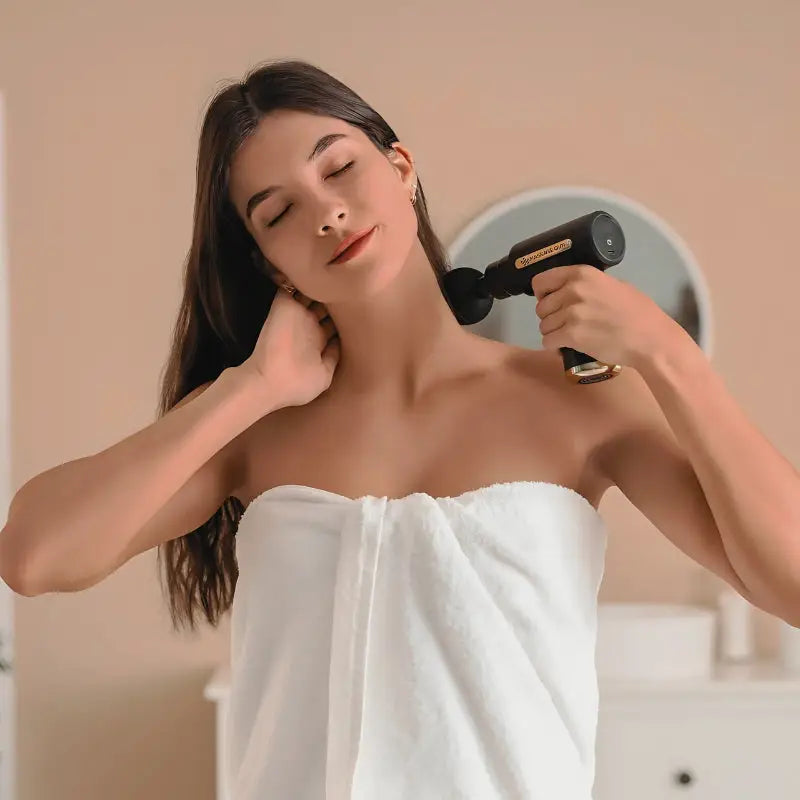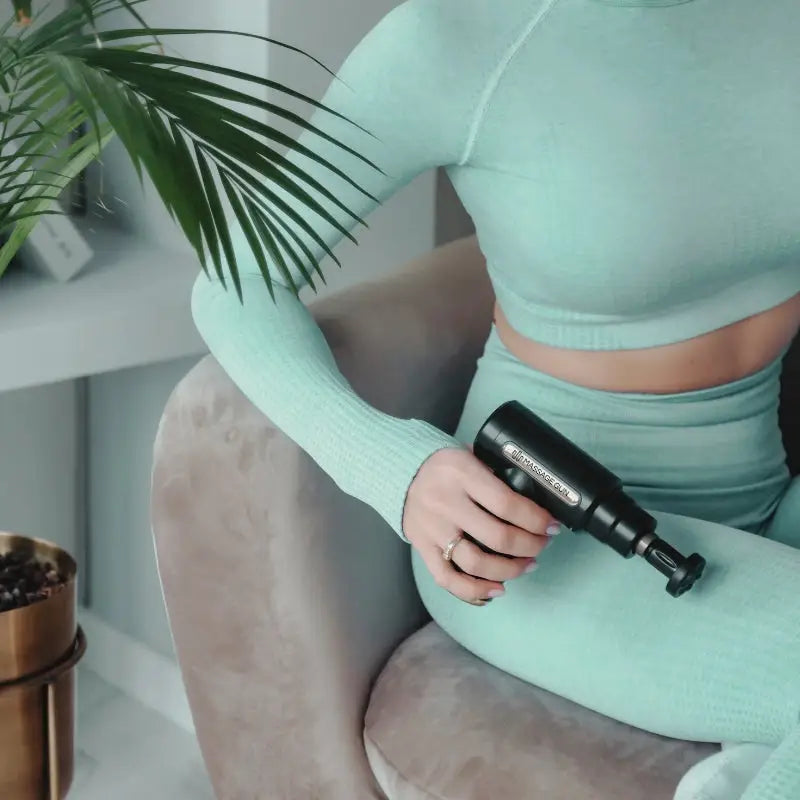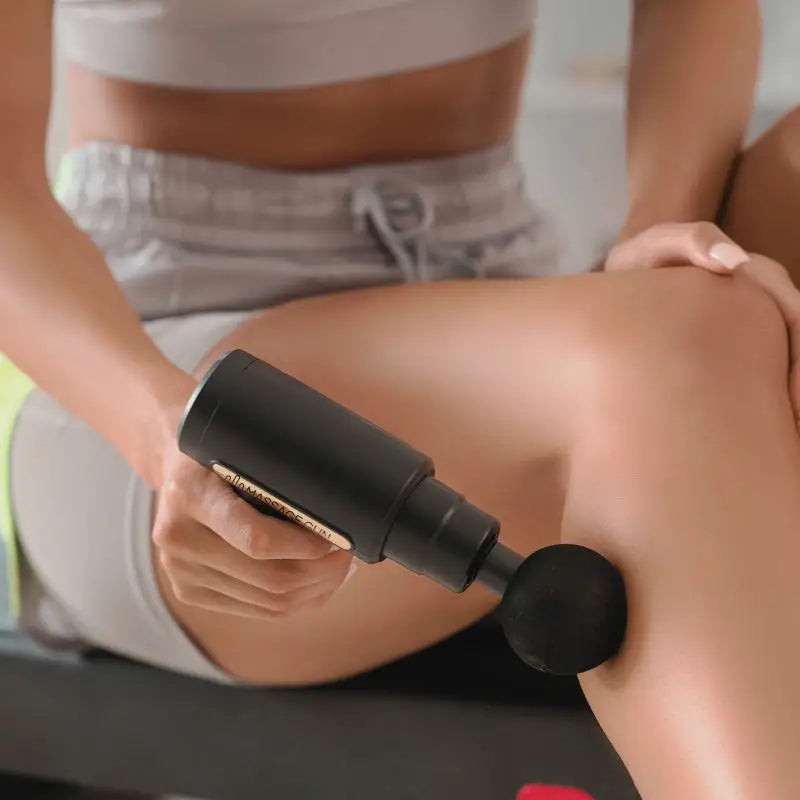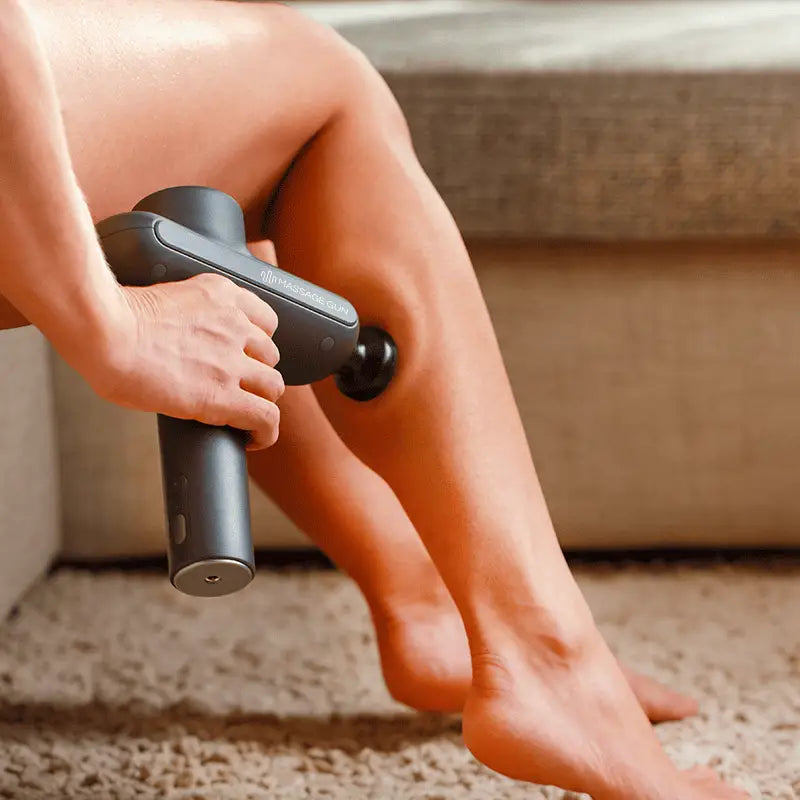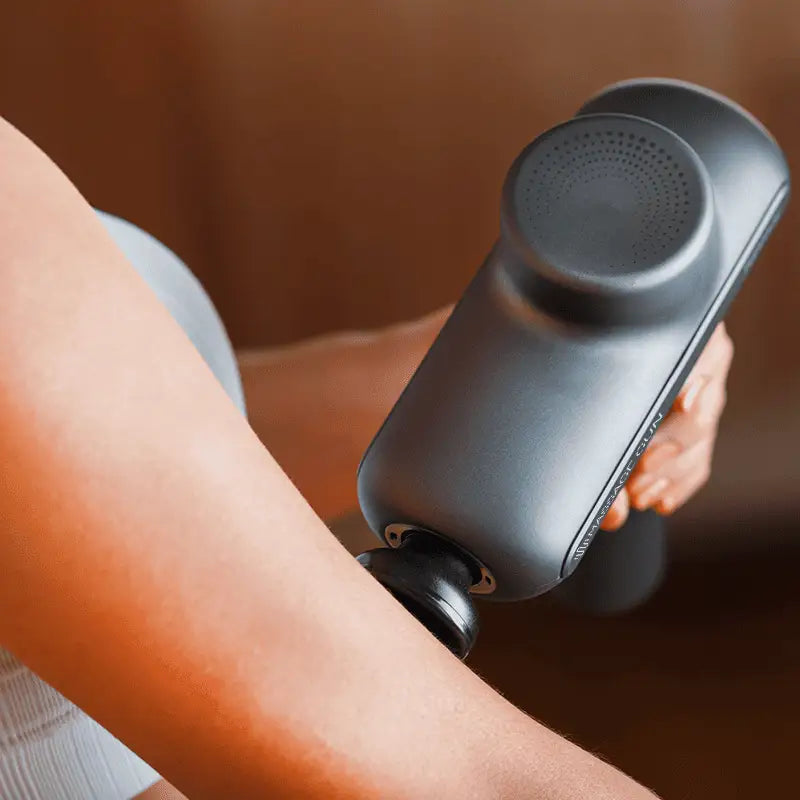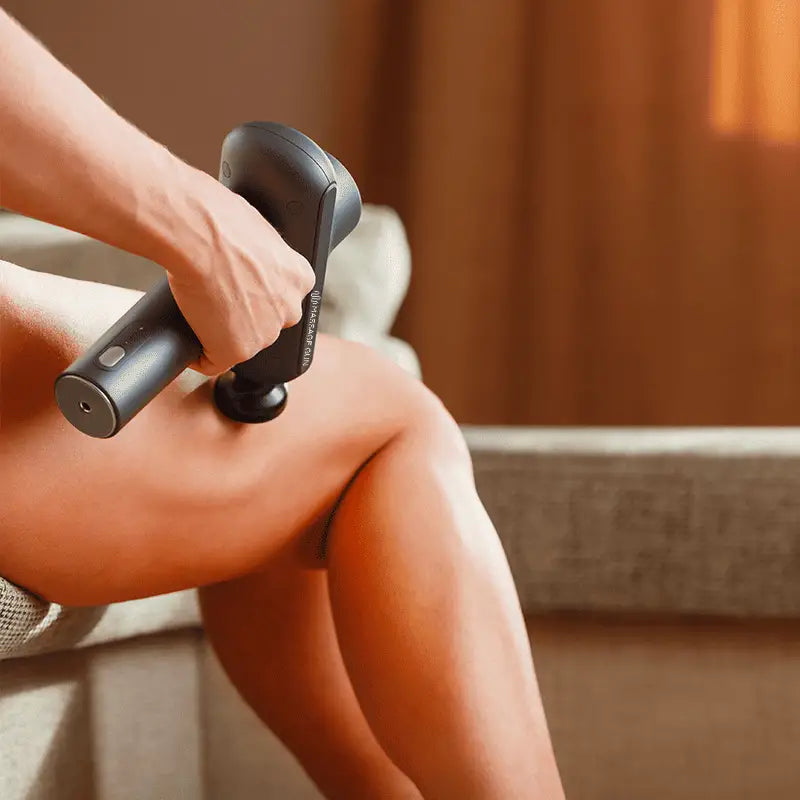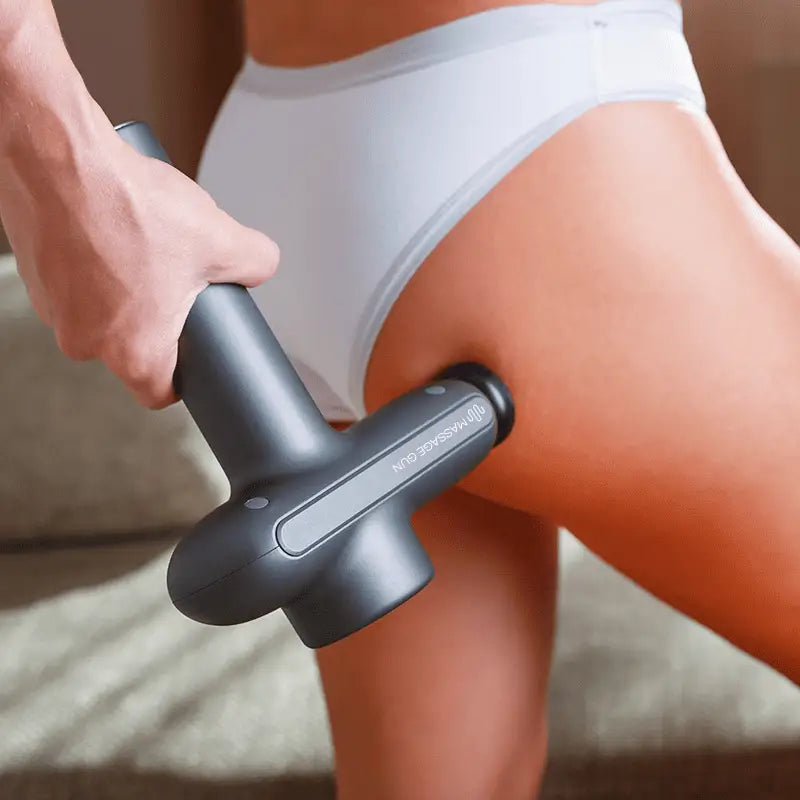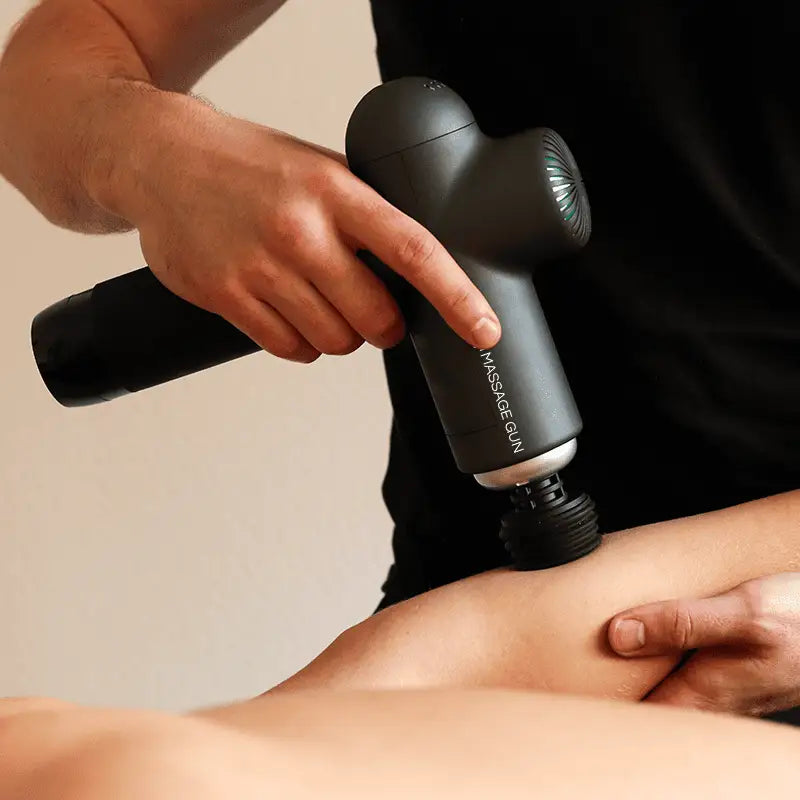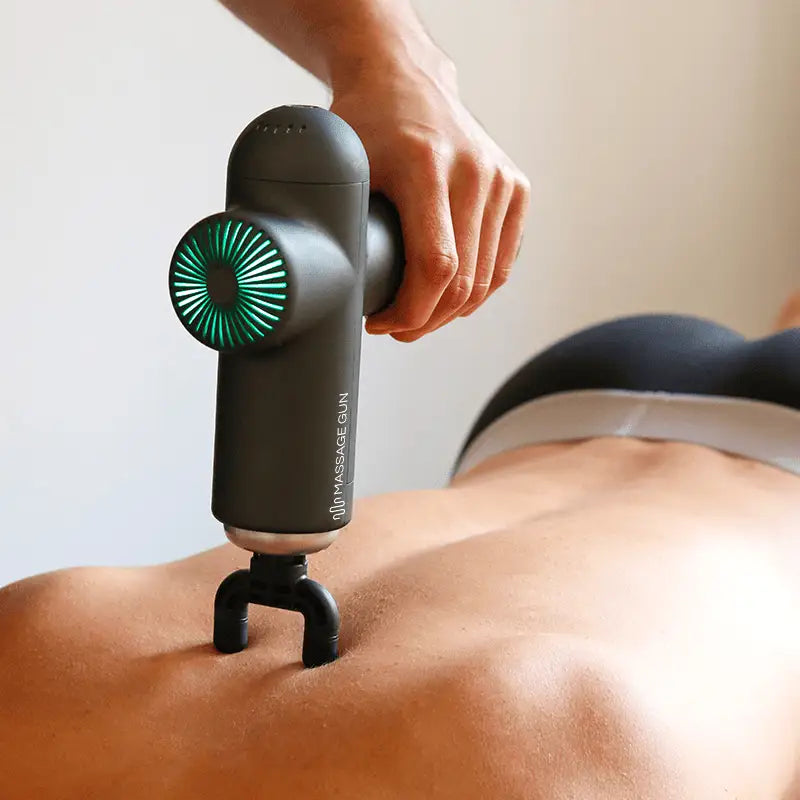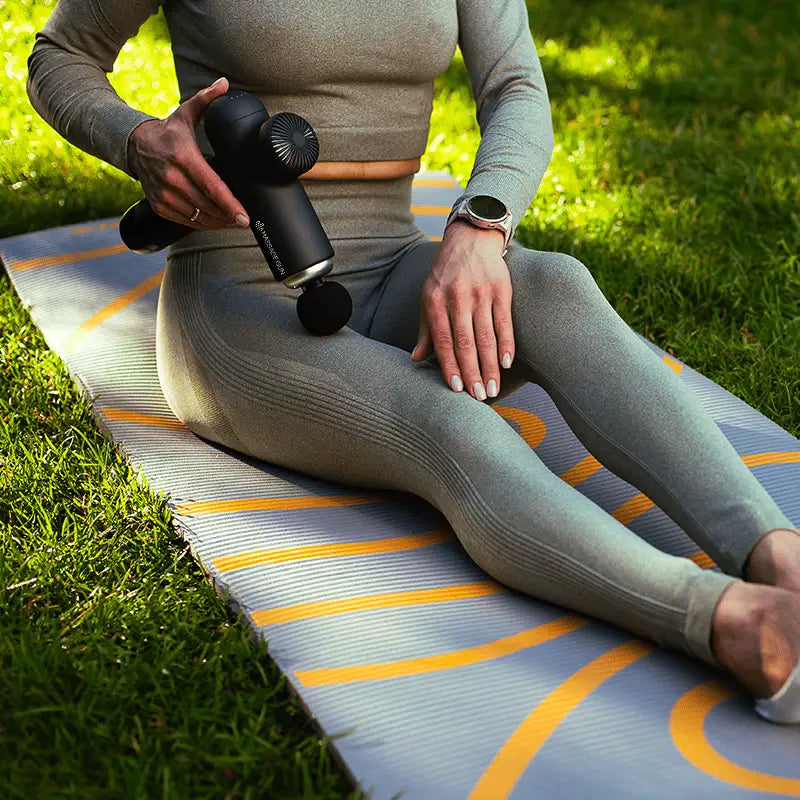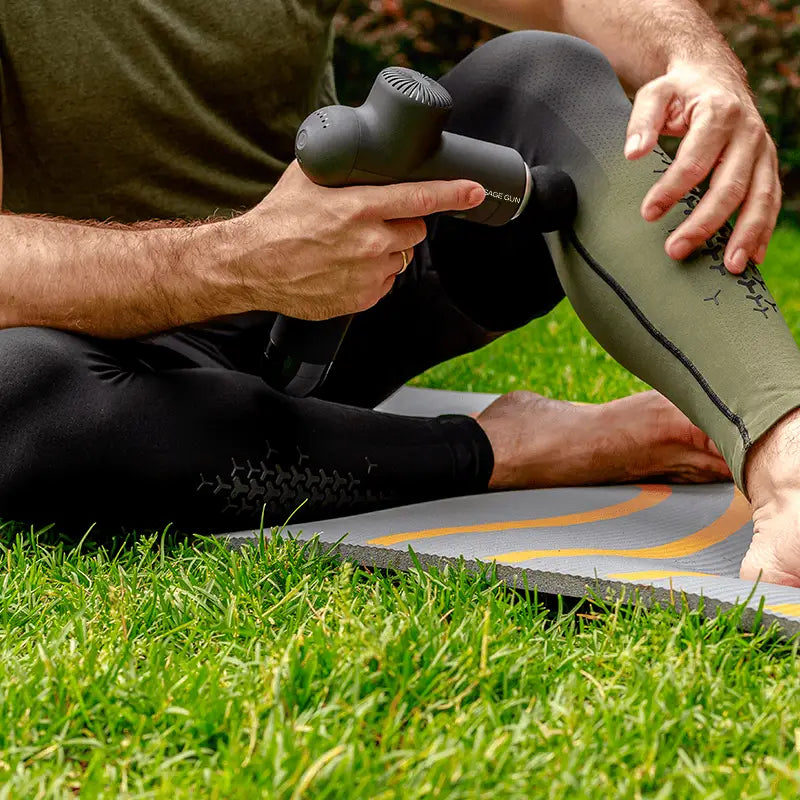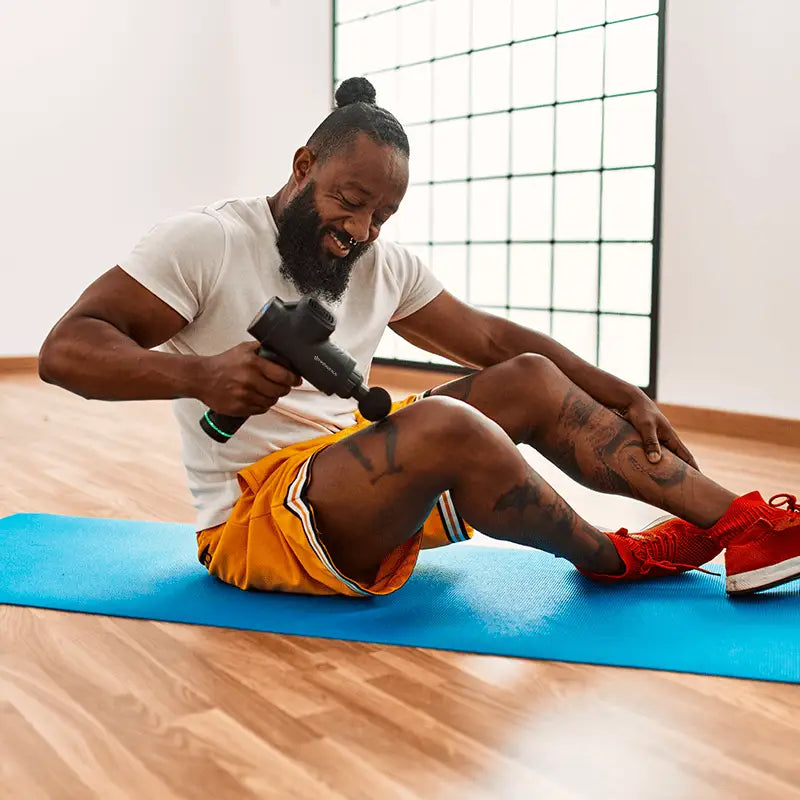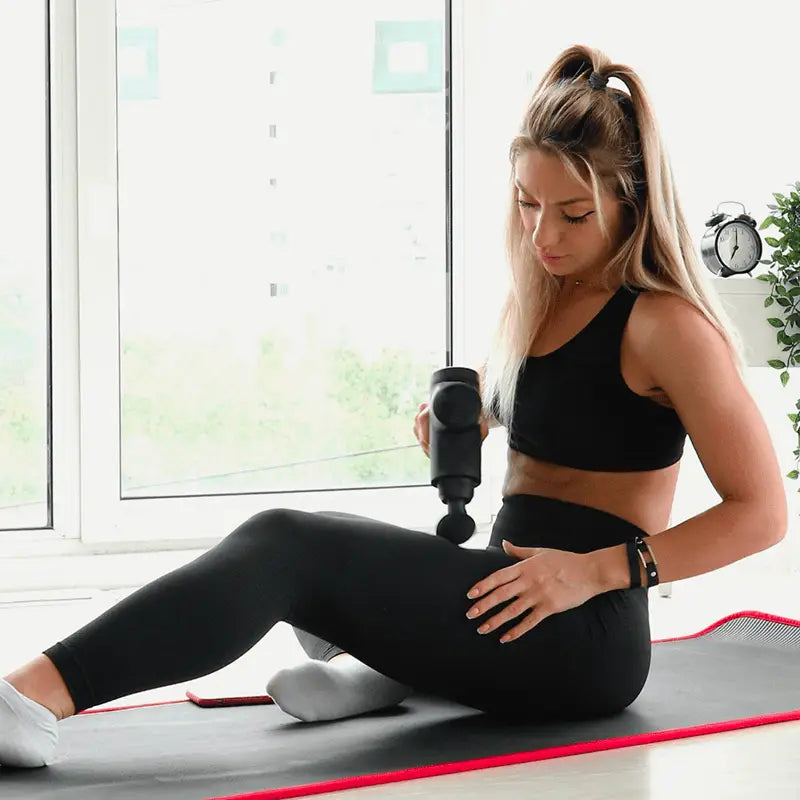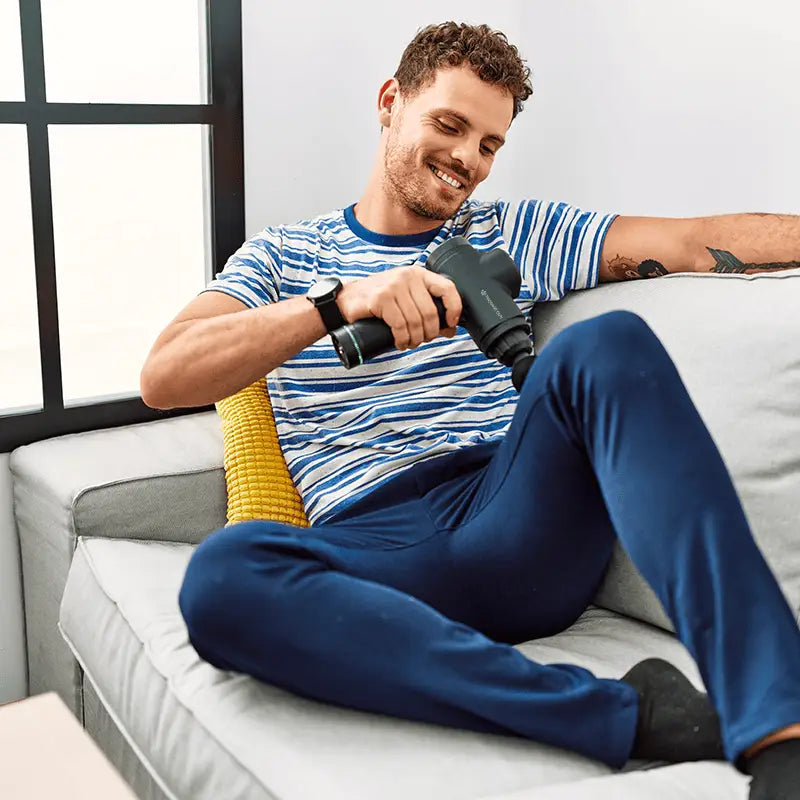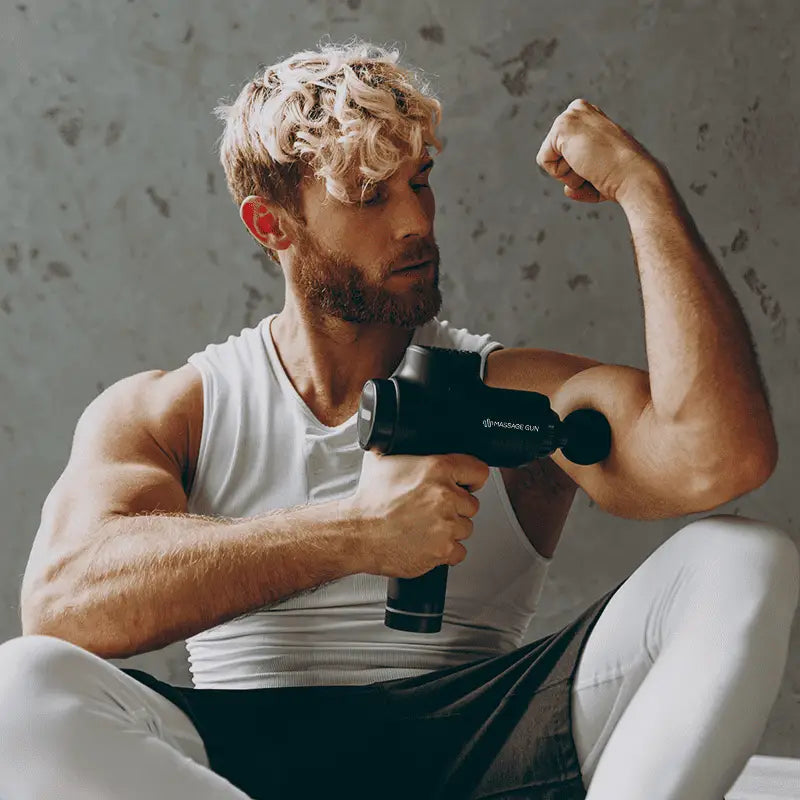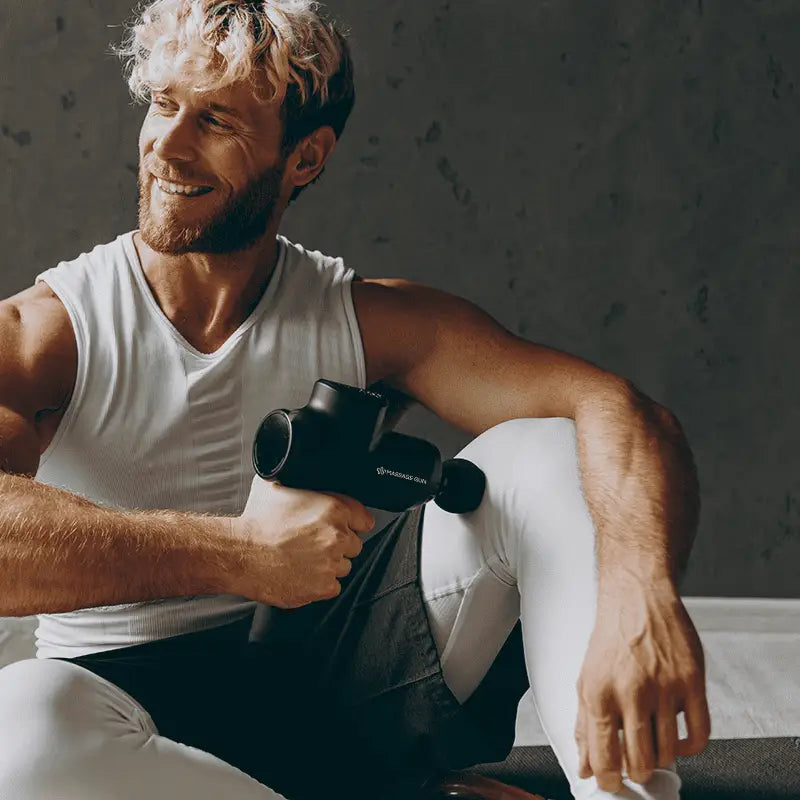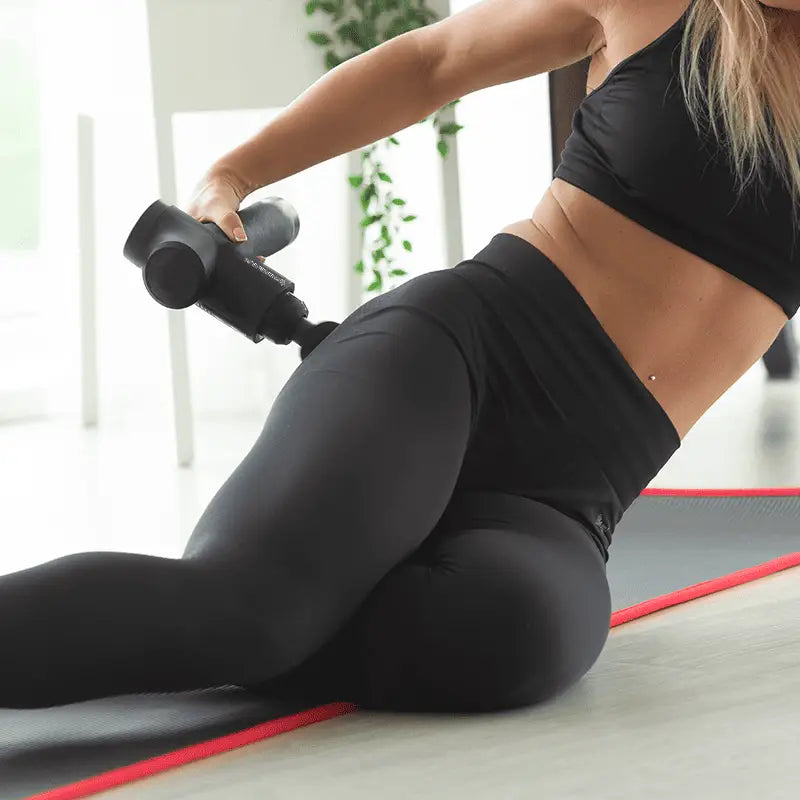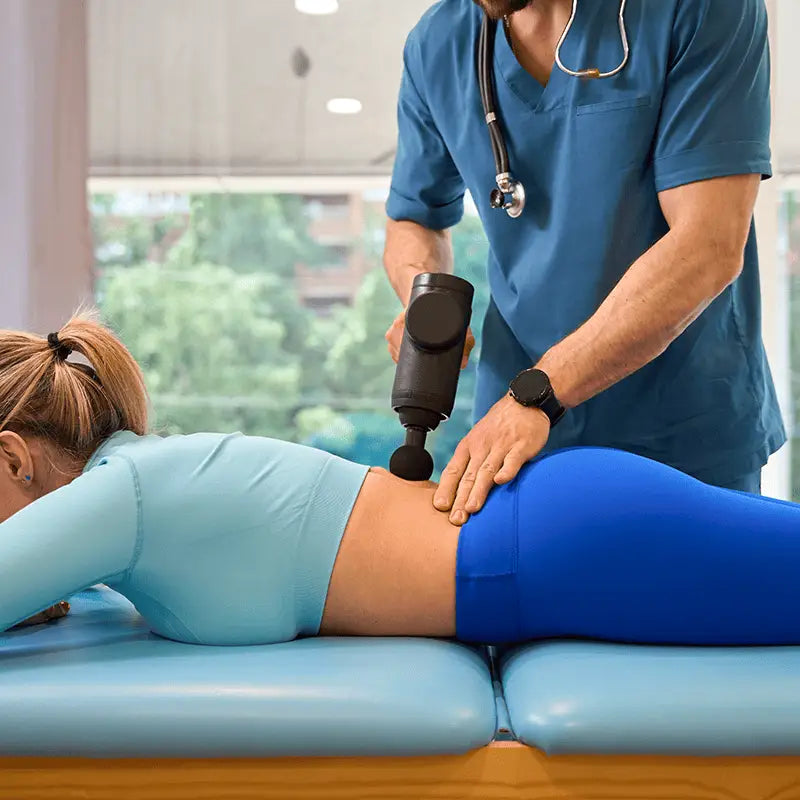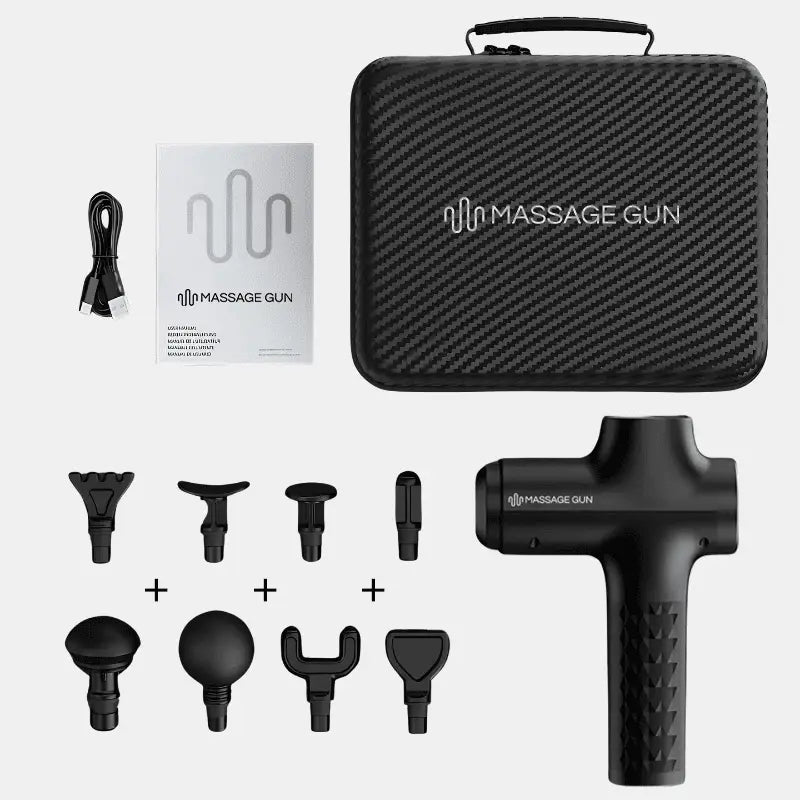Using a massage gun on your legs is an effective way to relieve muscle pain, improve mobility, and reduce muscle tension. This device applies percussive massage therapy to the legs, which helps increase blood flow and reduce inflammation, promoting faster recovery.
Whether you're an athlete or someone experiencing tight muscles, learning how to use a massage gun properly is key to maximizing its benefits. This article will guide you through the best practices for using a massage gun on your legs for optimal results.
Understanding the benefits of using a massage gun on legs
Massage guns offer a lot of benefits when used correctly. They help increase blood flow, reduce swelling, and improve muscle recovery after physical activity. Regular use can also help relieve tension in the legs, ease muscle pain, and prevent delayed onset muscle soreness (DOMS).
This type of vibration therapy helps target tight areas in the muscles, including deep tissue massage, to promote healing and muscle activation. By adding this tool to your fitness routine, you can expect improved mobility and enhanced performance in daily activities.
When to use a massage gun on your legs?
Using a massage gun at the right time is crucial for maximizing its effects. Pre-exercise, it helps activate muscles and improve circulation, reducing the risk of injury. Post-exercise, it aids in muscle recovery by increasing blood flow and reducing muscle tightness, especially in the quads and calves.
Massage guns can be used any day you engage in physical activity, but remember to adjust the level of intensity based on how sore or tight your muscles feel. Avoid using it on bony spots like the shin bone or directly on joints, as this can cause discomfort.
Using a massage gun to aid in lymphatic drainage
In addition to relieving leg pain, a massage gun can assist with lymphatic drainage, promoting the removal of toxins and reducing fluid retention in the legs. To treat this, use slow, sweeping motions, starting at the ankles and moving upward toward the upper legs.
Apply the massage gun gently, focusing on stimulating the blood vessels and lymphatic flow. This technique helps improve circulation and reduce swelling, making it a great addition to your recovery routine.
Best practices for using a massage gun on specific leg muscles
When using a massage gun on your legs, it’s important to focus on specific muscles for targeted relief. For the quads, move the gun slowly from the knee to the hip, avoiding direct pressure on the joints. On the calves, use slow movements, starting at the ankle and moving upward to relieve tightness.
The upper leg and hamstrings can also benefit from deep tissue massage with a percussion gun. Always begin with lower speeds to gauge how your muscles feel, and gradually increase the intensity based on comfort.
How to choose the right attachment for your leg massage?
Most massage guns come with multiple attachments to target different muscle groups. The flat head attachment is ideal for large muscle groups like the quads and hamstrings, offering broad, even pressure.
The bullet attachment is perfect for tight areas and trigger points in smaller muscles, such as the calves. By using the right massage head, you can target deep layers of muscle tissue, break down scar tissue, and relieve muscle knots, which are often the main cause of muscle pain after intense workouts.
Mistakes to avoid when using a massage gun on your legs
It’s easy to misuse a massage gun if you’re not familiar with its proper technique. Avoid applying too much pressure or staying in one spot for too long, as this can cause bruising or further injury. Overuse can lead to overstimulation of the muscles, leaving them feeling sore rather than relieved.
Always move the massage gun in the direction of the muscle fibers, and never use it on bony areas like the shin bone. Ensuring safety by avoiding these mistakes will enhance the massage gun benefits and prevent discomfort.
Integrating massage gun use into your leg care routine for sports rehabilitation
Incorporating a massage gun session into your routine can significantly aid in sports rehab and physical therapy. Athletes and individuals recovering from injuries can use a massage gun to treat areas of muscle stiffness and improve flexibility. For runners, focusing on the calves and quads can help relieve tension and prevent future injuries.
If you're weight training, using the gun on your hamstrings and upper thighs can reduce soreness and promote faster recovery. According to the Journal of Sports Medicine, percussive therapy can help maintain muscle health when used 3-4 times a week as part of a fitness routine.
How to adjust settings for different leg muscles?
Different leg muscles require different intensity settings. Larger muscles like the quads and hamstrings may need higher intensity to break down muscle knots, while smaller muscles, like the calves, need lower intensity to avoid overstimulation.
Massage guns offer adjustable speeds, and it’s important to vary the setting based on muscle type and sensitivity. Start with lower speeds and gradually increase as needed, ensuring that the session remains comfortable. For sensitive areas like the neck or smaller muscle groups, always use lower intensity to avoid discomfort.
When not to use a massage gun on your legs?
There are times when it's not safe to use a massage gun. Avoid using it on areas with acute injuries such as sprains or muscle tears. If you have medical conditions like deep vein thrombosis or varicose veins, consult with a physical therapist or health care provider before using a massage gun.
Additionally, refrain from using the gun on areas with skin infections or open wounds. The Journal of Applied Medicine recommends avoiding massage guns on bony areas, joints, and sensitive spots to prevent potential injury.
By following these best practices and understanding when to use a massage gun on your legs, you can experience the full range of massage gun therapy benefits, including reduced muscle tension, improved circulation, and faster recovery.
Whether you're looking for pain relief after a workout or just need to relieve tension, massage guns offer an easy-to-use, effective solution for anyone looking to stay active and maintain good health.
Frequently asked questions
1. How do you properly use a massage gun on your legs?
To properly use a massage gun on your legs, start by choosing the right attachment for the muscle group you're focusing on. For large muscles like the quads and hamstrings, use the flat or round head attachment. Set the gun to a low or medium level and apply it gently, moving it along the body in slow, sweeping motions from the knee to the hip.
This helps to stimulate blood flow and promote leg recovery. Pay attention to how your muscles feel sore, and avoid using too much pressure on sensitive or bony areas. Consult a massage therapist for more professional advice on proper use.
2. How often should I use a massage gun on my legs?
How often you use a massage gun on your legs will vary depending on your exercise routine and recovery needs. Most professional advice recommends using the device 3-4 times per week to promote soft tissue recovery and improve range of motion.
After intense workouts, using the percussion massage gun can help alleviate soreness and speed up leg recovery. For lighter recovery days, you can reduce the level of intensity and focus on more gentle massages to help relax the muscles without overstimulation.
3. What is the best attachment for a massage gun on legs?
The best attachment for your legs depends on the specific muscle group you're targeting. The flat or round head is ideal for larger muscles like the quads and hamstrings, as it provides broad pressure. For the calf muscles, the bullet attachment is more precise, allowing you to target soft tissue more accurately.
Choosing the right tool for each muscle helps optimize the benefits of massage, improving range of motion and reducing soreness. Using a systematic review of the available attachments can help you learn which works best for your body.
4. Can a massage gun help with leg pain?
Yes, a massage gun can help relieve leg pain by improving blood flow, stimulating soft tissue, and breaking up muscle knots. This is particularly effective after exercise, as it helps alleviate soreness and feel sore muscles.
According to hingehealth.com, regular use of a percussion massage gun can also aid in leg recovery by improving circulation and reducing inflammation. Using the gun on your quads and calves can reduce tension and promote faster healing of tight muscles.
5. Can I use a massage gun on my legs every day?
You can use a massage gun on your legs every day, but it's important to adjust the intensity based on how your muscles feel. For more intense exercise days, using the gun on higher settings can help alleviate tightness and stimulate recovery.
On rest days, using a lower level and more gentle pressure is recommended to avoid overstimulation. Remember to add variety to your recovery routine by alternating between different attachments to target specific muscle groups like the calf or quads.
6. What are the benefits of using a massage gun on your legs?
Using a massage gun on your legs offers numerous benefits, including improved range of motion, increased blood flow, and faster recovery from exercise. It helps stimulate soft tissue, which reduces leg pain and muscle tightness.
The device is a powerful tool that can easily be integrated into your fitness routine to target large muscles like the quads, helping reduce post-workout soreness and preventing future injury. These benefits of massage make it a great addition to any recovery plan.
7. Where should I not use a massage gun on my legs?
Avoid using a massage gun on bony areas like the shin or on the knee joint, as these areas can be sensitive to high-pressure stimulation. Additionally, it’s best to avoid using the gun on your neck, or any areas with existing injuries like soft tissue damage, without consulting a massage therapist or health care professional. If you're unsure, read more from trusted sources like Hinge Health or refer to a systematic review for proper use guidelines.
8. How long should I use a massage gun on my legs?
When using a massage gun on your legs, aim to spend 1-2 minutes per muscle group. Focus on specific muscles like the quads, calves, and hamstrings to ensure proper recovery. Moving the gun in gentle, sweeping motions helps to warm the muscles, promoting range of motion and reducing tightness.
If you feel discomfort or excessive soreness, stop the session and reduce the intensity for the next use. Always listen to your body and avoid prolonged use on one spot to prevent overstimulation.
9. Can a massage gun help with sore legs after running?
Yes, a massage gun can significantly help reduce soreness in your legs after running. By applying gentle pressure to the quads, hamstrings, and calves, the gun helps to stimulate circulation and break down lactic acid, which often causes post-run soreness.
Adding a massage gun session to your post-run recovery routine can reduce muscle tension, improve soft tissue flexibility, and help you recover faster for your next workout.
10. Is it safe to use a massage gun on tight leg muscles?
It is safe to use a massage gun on tight muscles, but it's essential to adjust the intensity and duration depending on how your muscles feel. Start with a low level of intensity and gently work the gun over tight areas, focusing on large muscle groups like the quads and hamstrings.
According to studies in the Journal of Applied Medicine, using the gun properly helps improve strength and mobility in the legs. However, if the muscles are overly sore or injured, consult a massage therapist before continuing use.


